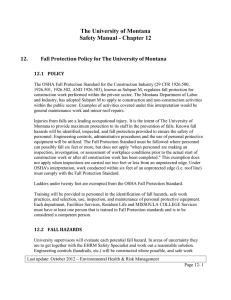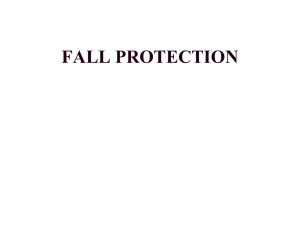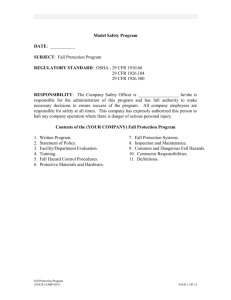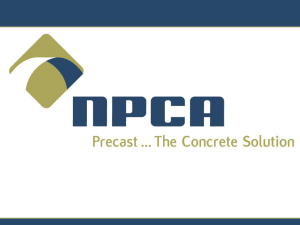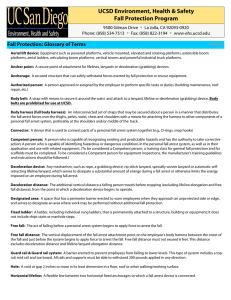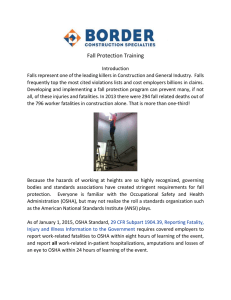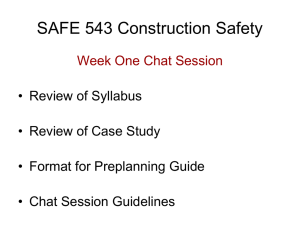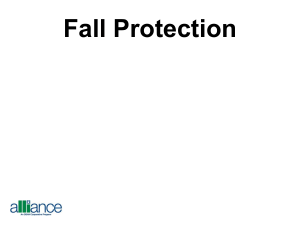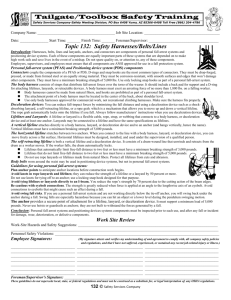Personal Fall Arrest System Personal fall arrest systems
advertisement
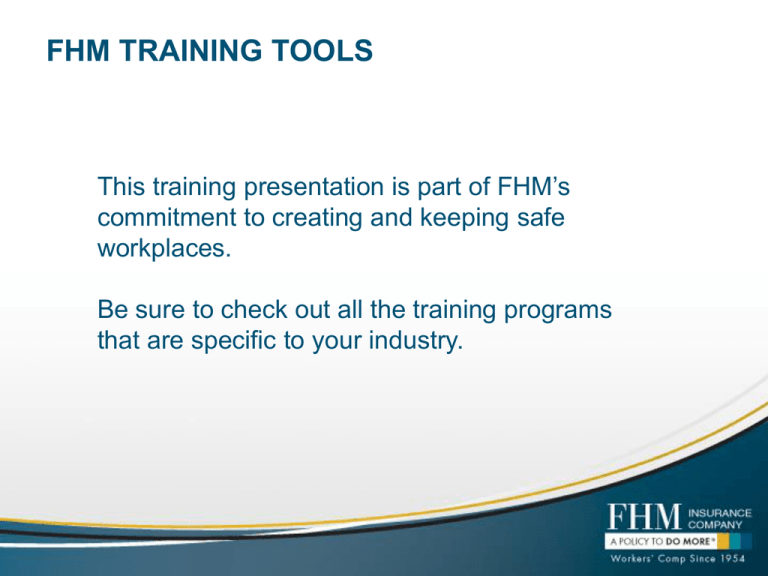
FHM TRAINING TOOLS This training presentation is part of FHM’s commitment to creating and keeping safe workplaces. Be sure to check out all the training programs that are specific to your industry. Fall Protection for Construction ►►► These materials have been developed based on applicable federal laws and regulations in place at the time the materials were created. The program is being provided for educational and informational purposes only and does not constitute and is not intended to provide OSHA compliance certification, regulatory compliance, a substitute for any "hands on“ training required by applicable laws and regulations, or other legal or professional advice or services. By accessing the materials, you assume all responsibility and risk arising from the use of the content contained therein. ©2010 Grainger Safety Services, Inc. Learning Objectives At the end of this course you will: ► Have ► Plan knowledge and skills needed for fall hazards and work safely when hazards are present Agenda Today’s agenda: ► Overview ► Fall protection strategies ► Types ► Your of equipment for fall arrest systems responsibilities Section 1 Overview The Hazards of Working at Heights Frequently cited OSHA provisions are failure to: ► Protect workers from falls of 6 feet or more ► Protect workers from falling into floor openings ► Provide guardrails The Hazards of Working at Heights Hazards causing most fall-related injuries: ► Unprotected ► Improper scaffold construction ► Unguarded ► Misuse sides, wall openings, and floor holes protruding steel rebar of portable ladders Employee Training Training is required in the following areas: ►The nature of fall hazards ►Correct ►Use procedures for fall protection systems and operation of protection devices ►Roles in safety monitoring and fall protection plan ►Limitation of equipment Employee Training Refresher training is required if there are: ► Changes in the workplace ► Changes in the types of fall protection systems ► Inadequacies in an affected employee's knowledge Control Measures Control measures used to for serious hazards: ► Perform work at ground level ► Restrain worker so they can not reach the edge ► Use aerial lifts ► Use control line and personal fall arrest systems ► Cover holes as they are created Section 2 Fall Protection Strategies Fall Protection Strategies Fall Protection Strategies include: ► Guardrails ► Safety nets ► Personal ► Warning fall arrest systems lines ► Controlled ► Safety access zones monitoring ► Covers ► Fall protection plans Guardrail Systems A barrier to prevent employee falls to lower levels: ► Specific requirements: – Height of top rails shall be 42 inches plus or minus 3 inches above walking or working level – Withstand force of at least 200 pounds Safety Net Safety nets must have: ► Border rope for webbing ► Minimum breaking strength of 5,000 pounds Installations must be tested: ► After initial installation or major repair ► Before being used ► Whenever ► At relocated 6-month intervals if left in one place ► Inspected for deterioration at least once weekly Personal Fall Arrest System Personal fall arrest systems: ► Stops ► Limit ► Be employee falls from working levels maximum arresting force to 1,800 lbs rigged ► Complete ► Strength stop and limit maximum deceleration to withstand twice the potential impact energy Warning Line System Roof barrier warning of side or edge ► Warning lines shall consist of: – Ropes – Wires – Chains – Supporting stanchions Controlled Access Zones Controlled access zone is permitted only in: ► Overhand ► Fall brick laying and related work Protection Plan for leading edge work Controlled access zone should be as follows: ► Consist of ropes, wires, tapes, or equivalent and supporting stanchions ► Flagged ► Rigged and supported ► Minimum breaking strength of 200 pounds Safety Monitoring Safety monitoring permitted when: ► Employees ► Workers are engaged in low slope roofing work are covered by written fall protection plan Employer designated competent person must: ► Be able to recognize hazards ► Monitor ► Visual ► Can working or walking surfaces sight and communication not be distracted duties Covers Covers protect employees from falls through holes: ► Holes ► Sites covered surveyed before working ► Continually ► Support audit as work continues two times the weight of employees Fall Protection Plan Written fall protection plan must state: ► Why conventional fall protection systems cannot be used where the fall hazard is present ► Measures taken to reduce or eliminate fall hazard where conventional fall protection systems cannot be used An example fall protection plan is provided in the OSHA fall protection standard Section 3 Personal Fall Arrest Equipment Equipment Use, Care, and Maintenance Equipment used: ► Body harness ► Vertical lifeline or lanyard ► Horizontal lifeline ► Webbing ► Connectors ► Anchorages Body Harness Body harnesses are designed to: ► Minimize stress forces ► Provides freedom of movement ► Minimize force on the body in falls Vertical Lifeline or Lanyard Vertical lifeline or lanyard must have: ► Strength of 5,000 lbs or more ► Protected ► Separate from being cut or abraded vertical lifeline for each employee ► Self-retracting vertical lifelines have minimum strength of 3,000 lbs Horizontal Lifeline Horizontal lifelines: ► Designed, ► Complete installed, and used under supervision personal fall arrest system Webbing Ropes and straps used in: ► Lifelines ► Lanyards ► Body ► Made harness strength component from synthetic fibers Connectors Made of drop-forged, pressed or formed steel, or equivalent material: ► Rings and Snap hooks – Minimum tensile strength of 5,000 lbs Unless designed for it, do not engage to: ► Webbing, ► Each rope, or wire other ► D-ring ► Horizontal lifeline ► incompatibly shaped object Anchorages Used in attachment of personal fall arrest equipment: ► Must be independent of anchorage ► Supports at least 5,000 lbs Section 4 Your Responsibilities Your Responsibilities Your Responsibilities: ► Recognize ► Utilize ► Use fall hazards in the workplace fall protection strategies personal fall arrest systems equipment Additional Information Additional Resources: Stairways and Ladders: A Guide to OSHA Rules. OSHA Publication 3124, (2003) Preventing Worker Deaths and Injuries from Falls Through Skylights and Roof Openings. NIOSH Publication No. 90-100, (1989, December) Plain Language Revision of OSHA Instruction. STD 03-00-001 [STD 3-0.1A], (1999, June18)
